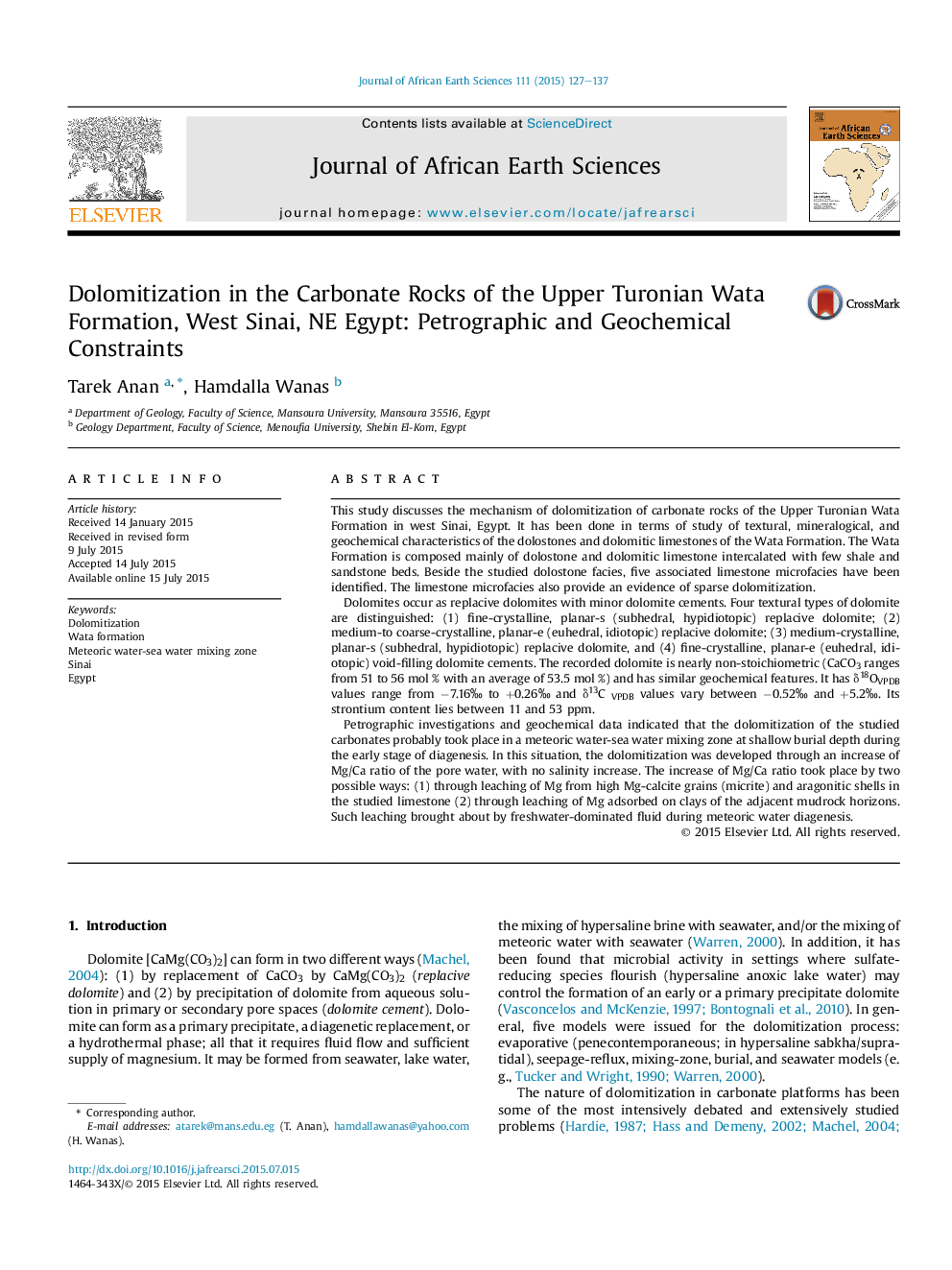| کد مقاله | کد نشریه | سال انتشار | مقاله انگلیسی | نسخه تمام متن |
|---|---|---|---|---|
| 4728489 | 1640196 | 2015 | 11 صفحه PDF | دانلود رایگان |

• The Upper Turonian Wata Formation is composed mainly of dolostone and dolomitic limestone.
• The majority of the recorded microfacies have provided an evidence of sparse to pervasive dolomitization.
• The recorded dolomite is nearly non-stoichiometric.
• The dolomitization of the studied carbonates probably took place in a sea water-fresh water mixing zone.
This study discusses the mechanism of dolomitization of carbonate rocks of the Upper Turonian Wata Formation in west Sinai, Egypt. It has been done in terms of study of textural, mineralogical, and geochemical characteristics of the dolostones and dolomitic limestones of the Wata Formation. The Wata Formation is composed mainly of dolostone and dolomitic limestone intercalated with few shale and sandstone beds. Beside the studied dolostone facies, five associated limestone microfacies have been identified. The limestone microfacies also provide an evidence of sparse dolomitization.Dolomites occur as replacive dolomites with minor dolomite cements. Four textural types of dolomite are distinguished: (1) fine-crystalline, planar-s (subhedral, hypidiotopic) replacive dolomite; (2) medium-to coarse-crystalline, planar-e (euhedral, idiotopic) replacive dolomite; (3) medium-crystalline, planar-s (subhedral, hypidiotopic) replacive dolomite, and (4) fine-crystalline, planar-e (euhedral, idiotopic) void-filling dolomite cements. The recorded dolomite is nearly non-stoichiometric (CaCO3 ranges from 51 to 56 mol % with an average of 53.5 mol %) and has similar geochemical features. It has δ18OVPDB values range from −7.16‰ to +0.26‰ and δ13C VPDB values vary between −0.52‰ and +5.2‰. Its strontium content lies between 11 and 53 ppm.Petrographic investigations and geochemical data indicated that the dolomitization of the studied carbonates probably took place in a meteoric water-sea water mixing zone at shallow burial depth during the early stage of diagenesis. In this situation, the dolomitization was developed through an increase of Mg/Ca ratio of the pore water, with no salinity increase. The increase of Mg/Ca ratio took place by two possible ways: (1) through leaching of Mg from high Mg-calcite grains (micrite) and aragonitic shells in the studied limestone (2) through leaching of Mg adsorbed on clays of the adjacent mudrock horizons. Such leaching brought about by freshwater-dominated fluid during meteoric water diagenesis.
Journal: Journal of African Earth Sciences - Volume 111, November 2015, Pages 127–137